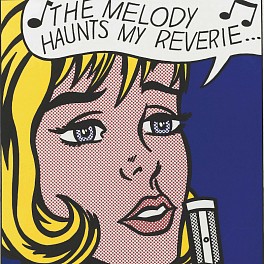BIOGRAPHY

1923 - 1997
Roy Lichtenstein was a prominent American pop artist, whose work borrowed heavily from popular advertising and comic book styles, which he himself described as being "as artificial as possible". He was unique in his visual language and his avant-garde style that was disruptive to viewers and yet accessible and popular with them. He also did innovative artwork that incorporated many late 20th century movements and addressed various social issues.
Some critics pronounced Lichtenstein "one of the worst artists in America", others insist that he is no artist at all, while a very emphatic group of critics, museum officials and collectors find his art fascinating, forceful and beautiful. He is often named, next to Andy Warhol, the great artist of the Pop Art movement.
Lichtenstein grew up under no specific artistic influence - neither at home nor at school. He attended a painting class at Parson's School, studied at the Art Students' League, then received his M.A. at the Ohio State University. He worked in the commercial graphic business for a while and taught at different universities.
The drastic change in Lichtenstein's career came with his first painting in the style of a comic strip. It was a painting of Mickey Mouse and Donald Duck. In the same year he produced six other works with recognizable characters from gum wrappers or cartoons. Several galleries in New York started displaying his works and in 1962 he had his first one-man show. The entire collection was bought by influential collectors of the time before the show even opened.
Lichtenstein worked a lot with stencils, thus producing rows of oversized dots that should make his paintings or prints look like a huge mass publication product. He wanted his art to look machine made, although the actual execution of his works was painstakingly like the old masters.
Other than paintings and sculptures, the artist produced a number of prints for which he used different techniques: lithographs, screenprints, etchings and woodcuts. He often combined several techniques in one print.
In 1996 the National Gallery of Art in Washington DC became the largest single repository of the artist's work when he donated 154 prints and 2 books. In total, there are some 4,500 works thought to be in circulation.
Roy Lichtenstein died of pneumonia in 1997 in New York City.
